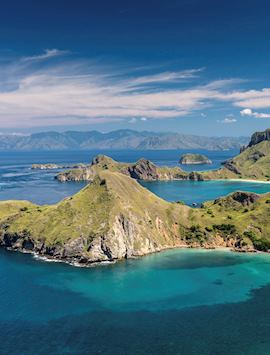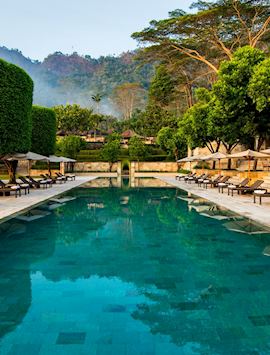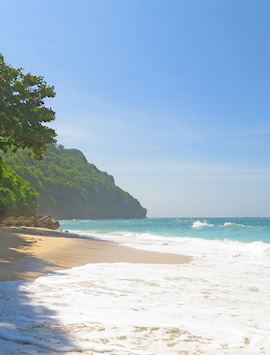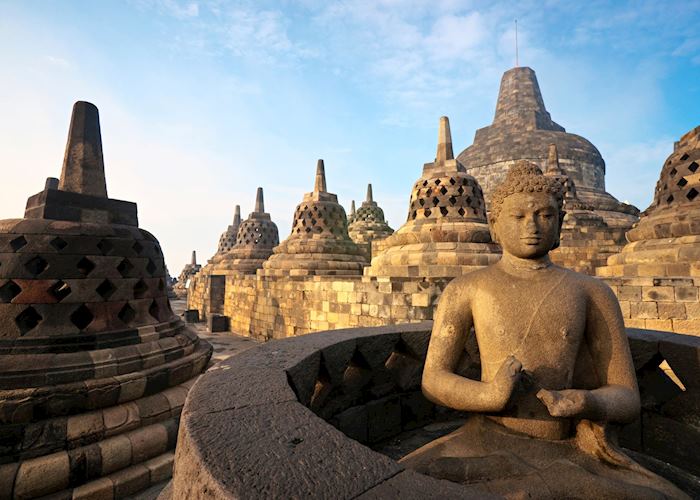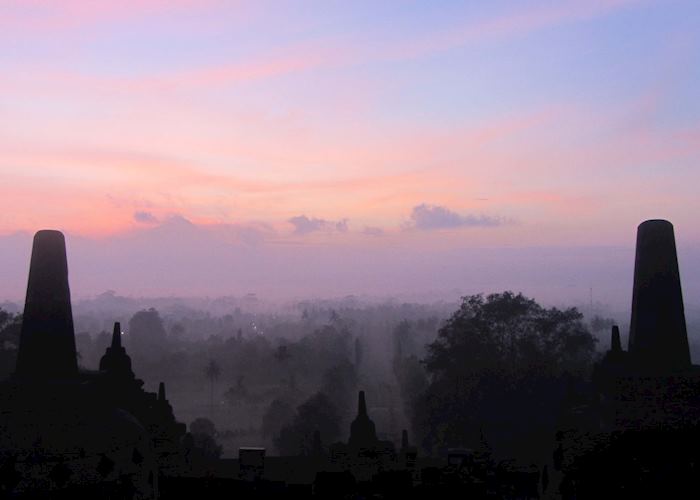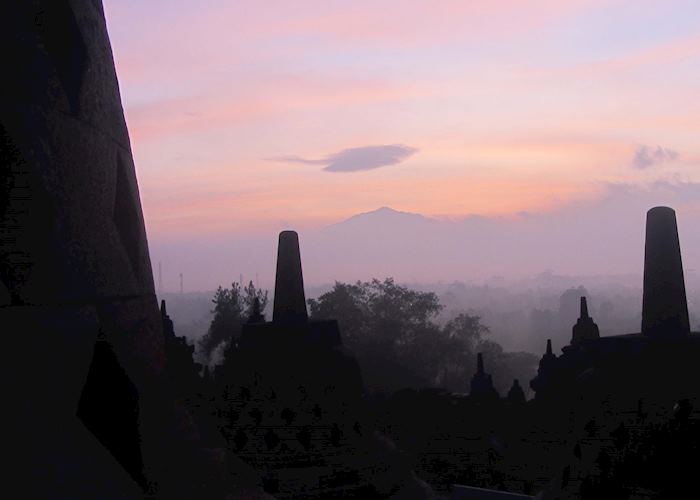Jump to:
Close to Yogyakarta is the vast pyramidal structure of Borobudur, one of Southeast Asia’s greatest religious relics.
This wonder is often compared to Angkor Wat in Cambodia and Myanmar’s Pagan, but it has a charm and grandeur all of its own.
History of Borobudur
Built between 750 and 850 AD, little is known about its early history before it fell into disuse and lay buried for centuries under layers of volcanic ash. It was only in the early 19th century that it was rediscovered and not until the 20th century that it was restored by the Dutch.
Hundreds of Buddha images stare impassively out over the plains, but even more enthralling are the startlingly detailed galleries and terraces that lead up to its central stupa, telling tales of ancient gods and immortalising long-resolved battles.
who's been there
-
01993 838 92501993 838 110
- Make an enquiry
Suggested itineraries featuring Borobudur
Our itineraries will give you suggestions for what is possible when you travel in Borobudur, and they showcase routes we know work particularly well. Treat them as inspiration, because your trip will be created uniquely by one of our specialists.
Places near Borobudur
- Yogyakarta 18 miles away
- Java 151 miles away
- Malang 169 miles away
- Surabaya 177 miles away
- Bandung 185 miles away
- Mount Bromo 190 miles away
- Jakarta 253 miles away
- Ijen National Park 281 miles away
- Bali Barat National Park 296 miles away
Photos of Borobudur
Our expert guides to exploring Borobudur
Written by our specialists from their own experiences of visiting Borobudur, these guides will help you make the most of your time there. We share both our practical recommendations and the best ways to appreciate Borobudur at its best.
-
Honeymoons in Indonesia and Bali ![Mother and baby orangutan]()
Honeymoons in Indonesia and Bali
Honeymoons in Indonesia and Bali
Plan your perfect honeymoon to Indonesia with Audley. Discover some of the beautiful properties on offer and how we can make your honeymoon in Indonesia extra special.
Read this guide



